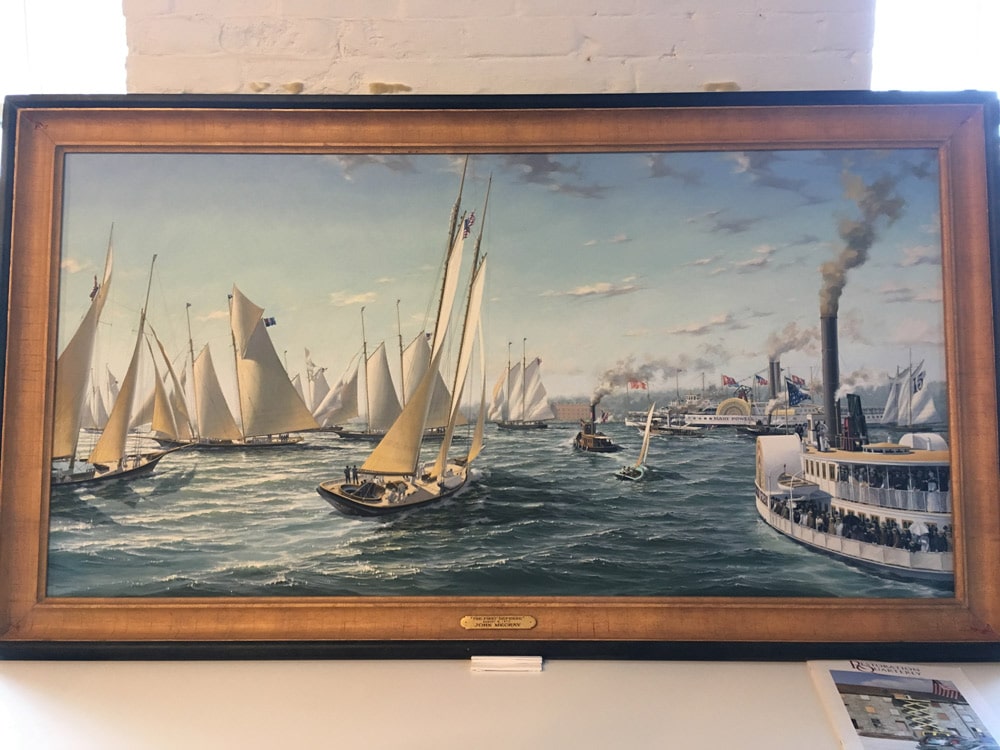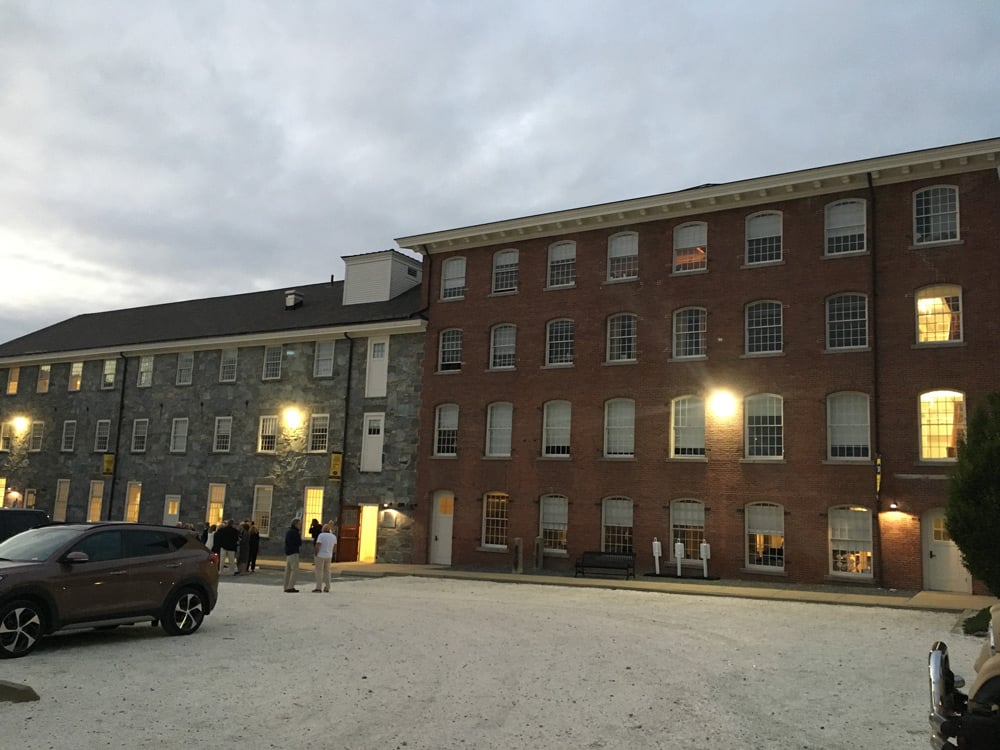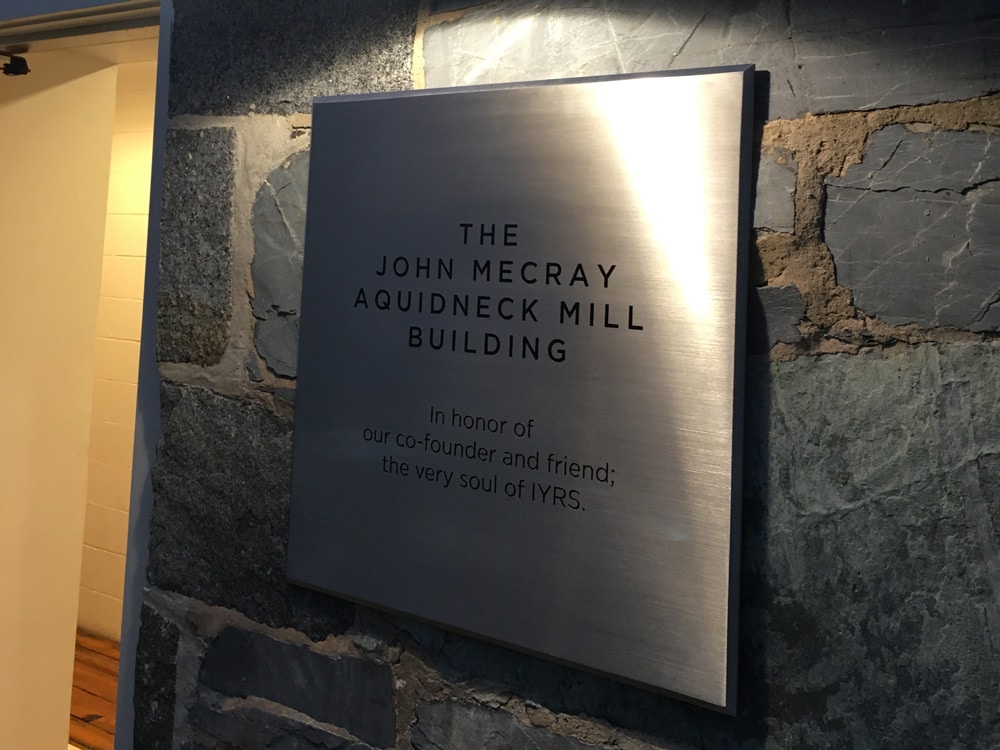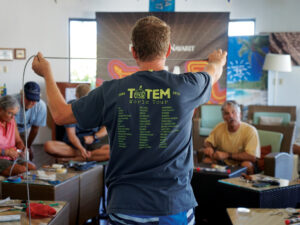
Marine artist John Mecray, who passed away after a long battle with leukemia last November, was a passionate supporter of nautical history and education. The Rhode Island-based painter helped bring Newport’s Museum of Yachting to life, and later was the co-founder of the city’s International Yacht Restoration School, now known as the IYRS School of Technology and Trades.
Fittingly, on September 20th, Mecray’s passion and foresight was honored when one of the school’s primary buildings – originally owned by the Newport Electric Company – was dedicated in his honor, and henceforth will be known as the John Mecray Aquidneck Mill Building. The 4-story brick structure, located in the heart of Newport on Thames Street, is the cornerstone of IYRS’s downtown campus.
Another of John’s legacies is also a prominent feature at IYRS – the 133-foot schooner Coronet, currently undergoing restoration at the school. Here’s a snippet about the famous yacht, from an obituary about John:
“In 1980, an article about the 1885 schooner yacht Coronet in WoodenBoat magazine caught Mecray’s eye. After visiting the yacht in Gloucester, Massachusetts, he explored options to see if … it could be restored and saved. He painted three works of Coronet, and used most of the proceeds to set up a museum fund to stabilize and help maintain the yacht. In 1995, the deteriorated vessel was accepted by IYRS. Coronet’s importance has been recognized by the National Trust for Historic Preservation, and IYRS has turned over full ownership and restoration of the yacht to Robert McNeil, a noted restorer of classic yachts. The work continues on the school’s campus.”

At the dedication ceremony, one of John’s most famous paintings was on display. “The First Defense: August 8, 1870” depicts the first America’s Cup match to be held in U.S. waters. It’s an incredible piece of work, particularly in the level of detail of the boats and rigging, but also in so many other facets: the droplets of steam rising from a steamboat, even the mustaches of the spectators lining its decks. The light and shadows, the set of the sails: all are Mecray trademarks. And of course no one captured the grace and movement of water better than John.

John’s wife, Mary Gillette, unveiled the plague now gracing the entrance to the building. “To me, he was the heart and soul of this school,” she said, and drew a laugh when she repeated John’s motto, in painting and in life: “Perfect is close enough.” Indeed, it was the perfect way to close a night when John was rightfully venerated, and remembered fondly by so many friends and colleagues. His name, and spirit, will live on forever at IYRS.








